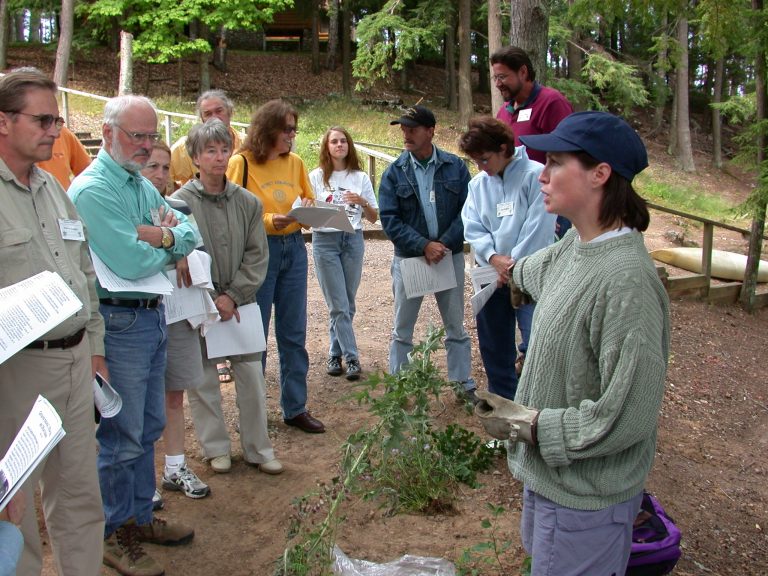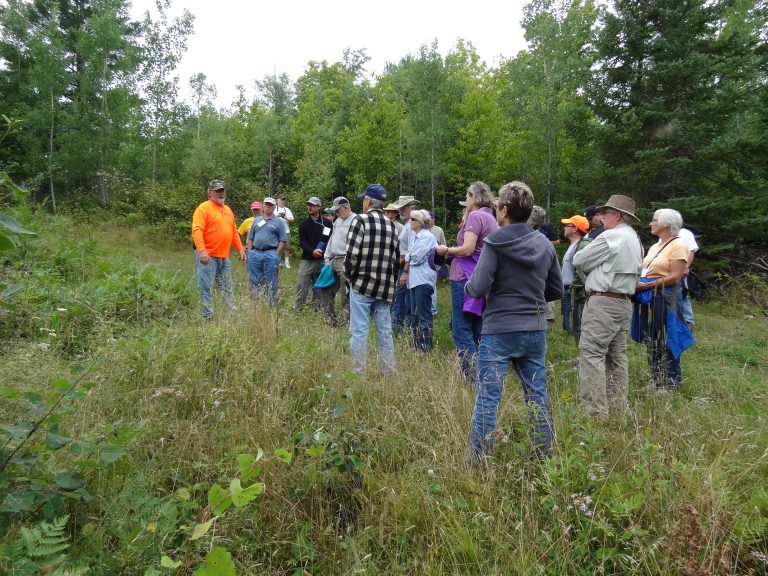Frederic “Rick” Braun’s love of woodlands came early, tracking tree growth on his family’s 4,000 acres in Langlade County with paint markings and experimenting with native plantings. He inherited not only a large estate used for logging and hunting, he also inherited an affection for the outdoors and what it takes to manage the land.

“I grew up in the woods. Since the age of 10, I was out there with my dad planting trees,” Braun said. “It was as good as going to an art museum or a Packers game. Every day when I’m out there the woods teach me something.”
Now 77 and slowly selling off sections of his woodland, Braun still leans on what he learned in the Coverts Project, a program of Extension’s Natural Resources Institute. Braun still treks out periodically to examine wildlife and follow plantings.
Braun’s father, also named Frederic, amassed a large swath of woodland in northern Wisconsin and was instrumental in the beginning of the Wisconsin Woodland Owners Association. He was inducted into the Wisconsin Forestry Hall of Fame in 1999 for his contributions to woodland management.
Both Braun and his father participated in Coverts, with Braun attending after his father passed away in 1999 and left him half of the family’s acreage. Braun acquired even more woodland since then and relies on his Coverts training to keep it humming.
“What Coverts taught me was how the forest affects the wildlife you have,” Braun said. “You’re watching your woods grow up.”

The Coverts project began in 1994 and continues to exemplify Extension’s commitment to use the latest research in developing tools for people across the state to use in their businesses and personal lives. Since its inception 854 participants responsible for managing nearly 250,000 acres across the state have completed the program. Those participants have reached out to more than 17,000 other landowners who own an additional nearly 700,000 acres. That means around 1 million acres of woodlands have been impacted by the Coverts project, the participants’ outreach to extend what they’ve learned, and resources shared to landowners.
100 of those acres are in Crawford County and belong to Tim and Linda Eisele who call their property Gobbler Ridge. “I hunt turkey and that’s why I bought the land,” he said. “I fell in love with it and I want to leave it better than I found it.”
The Coverts program gave Eisele tools to manage several aspects of his woodland. He has a plan for maintaining a native habitat for the area – regenerating white oak and hickory as well as tracking and removing invasive honeysuckle growth, an intensive process he goes through every year with his wife, Linda. Coverts also gives Eisele a network of other landowners to teach and learn from.
“Whenever I had questions, whenever I wanted to know something about an invasive species, I had people to call,” he said.
“Covert” pronounced “kuh-vert” is a 14th century English word describing a dense thicket that provides shelter for wildlife. The project involves field days and workshops covering ecological and financial management plans.

Private landowners are uniquely positioned to shape the future of Wisconsin’s forests — they own nearly 60% of the state’s forestland. However, relatively few landowners seek management assistance, leaving many acres unmanaged.
Coverts participants, dubbed Coverts Cooperators, agree to develop a sound woodland wildlife management plan for their land; reach out to and motivate other woodland owners in their community and be available to answer questions from them; and share resources provided by the Wisconsin Coverts Project.
“They extend the reach of the program to be contacts to other landowners,” said Jamie Nack of Extension’s Natural Resources Institutes who is also a Senior Wildlife Outreach Specialist for the Department of Forest & Wildlife Ecology at UW–Madison’s College of Agricultural and Life Sciences. “They’re a resource, they’re connected to others in the field.”
An average participant owns 40-60 acres of woodland, although other participants may be instrumental to land management through nonprofits or affiliates.
The program is free due to support from sponsors including UW–Madison Extension; the Department of Forest & Wildlife Ecology at UW–Madison’s College of Agricultural & Life Sciences; the Ruffed Grouse Society | American Woodcock Society; Wisconsin Sustainable Forestry Initiative (SFI®) Implementation Committee; Renewable Resources Extension Act; and the Anne and Jason Spaeth Family. Braun also contributes funding to support the program, continuing a charitable contribution started by his father.
Applications for the 2024 Wisconsin Coverts Project cohort are due June 15; more information can be found on this form. Additionally, the Coverts program provides an updated guide to resources for forest management and information, which can be accessed on the Coverts website.



